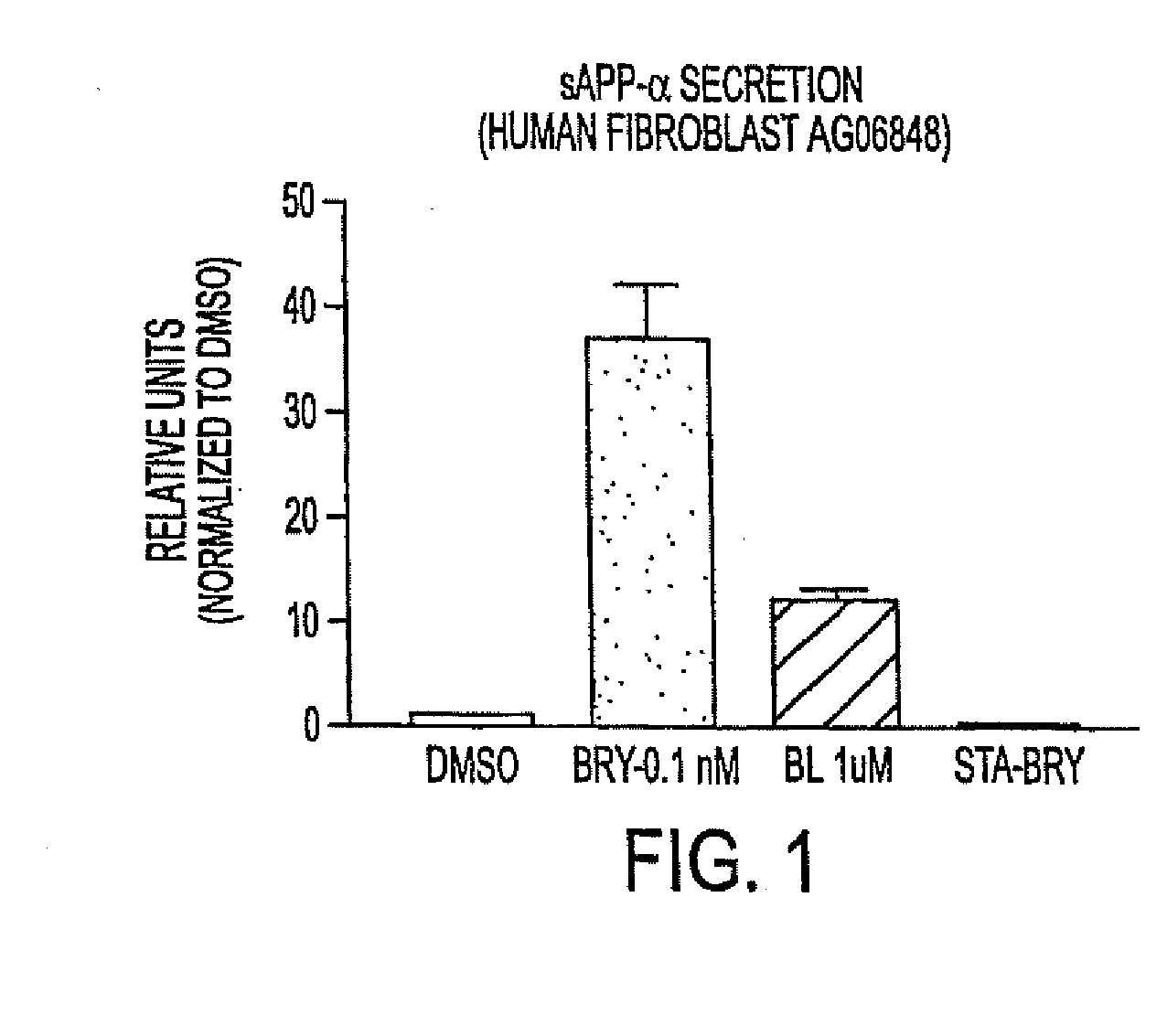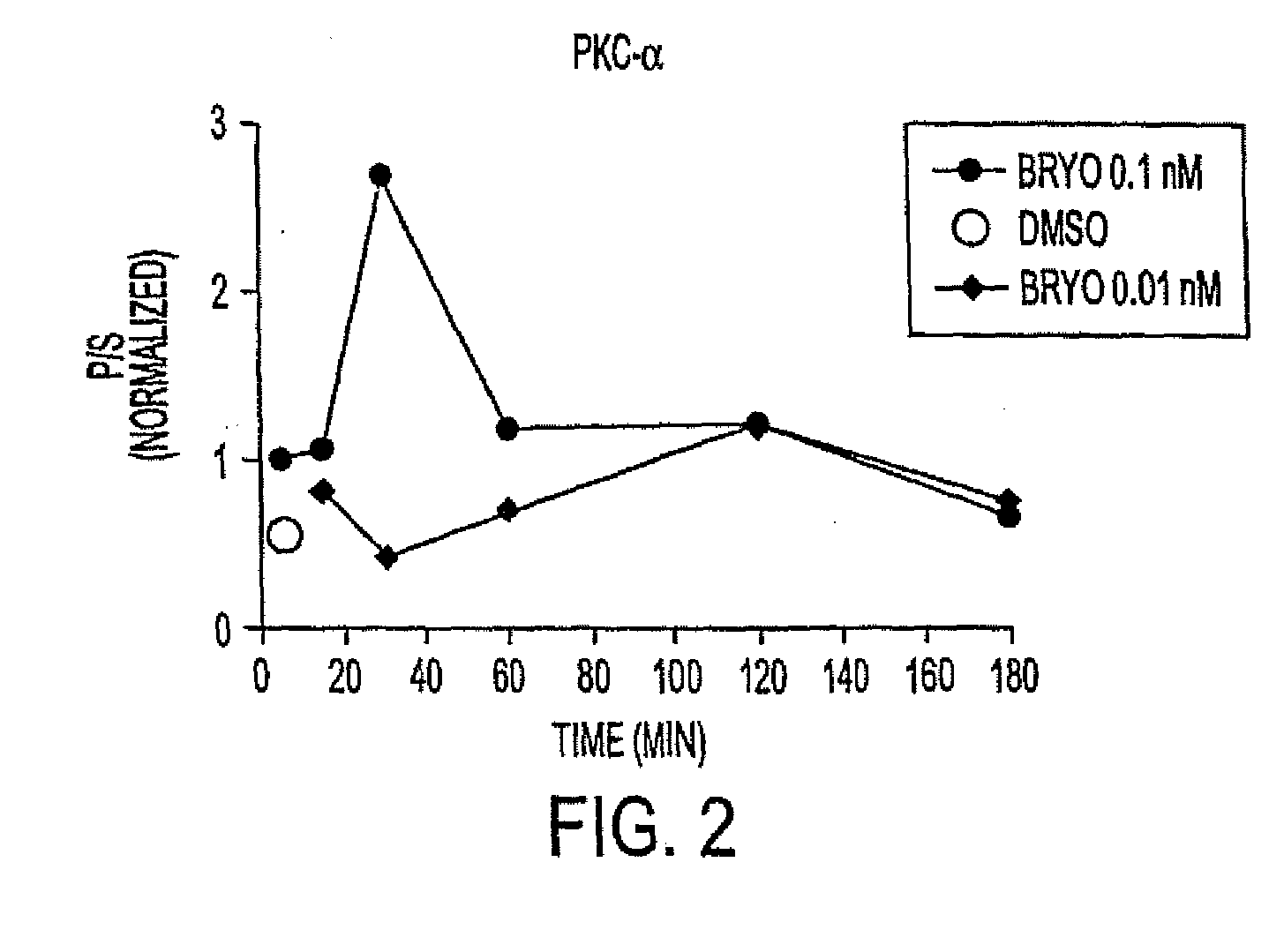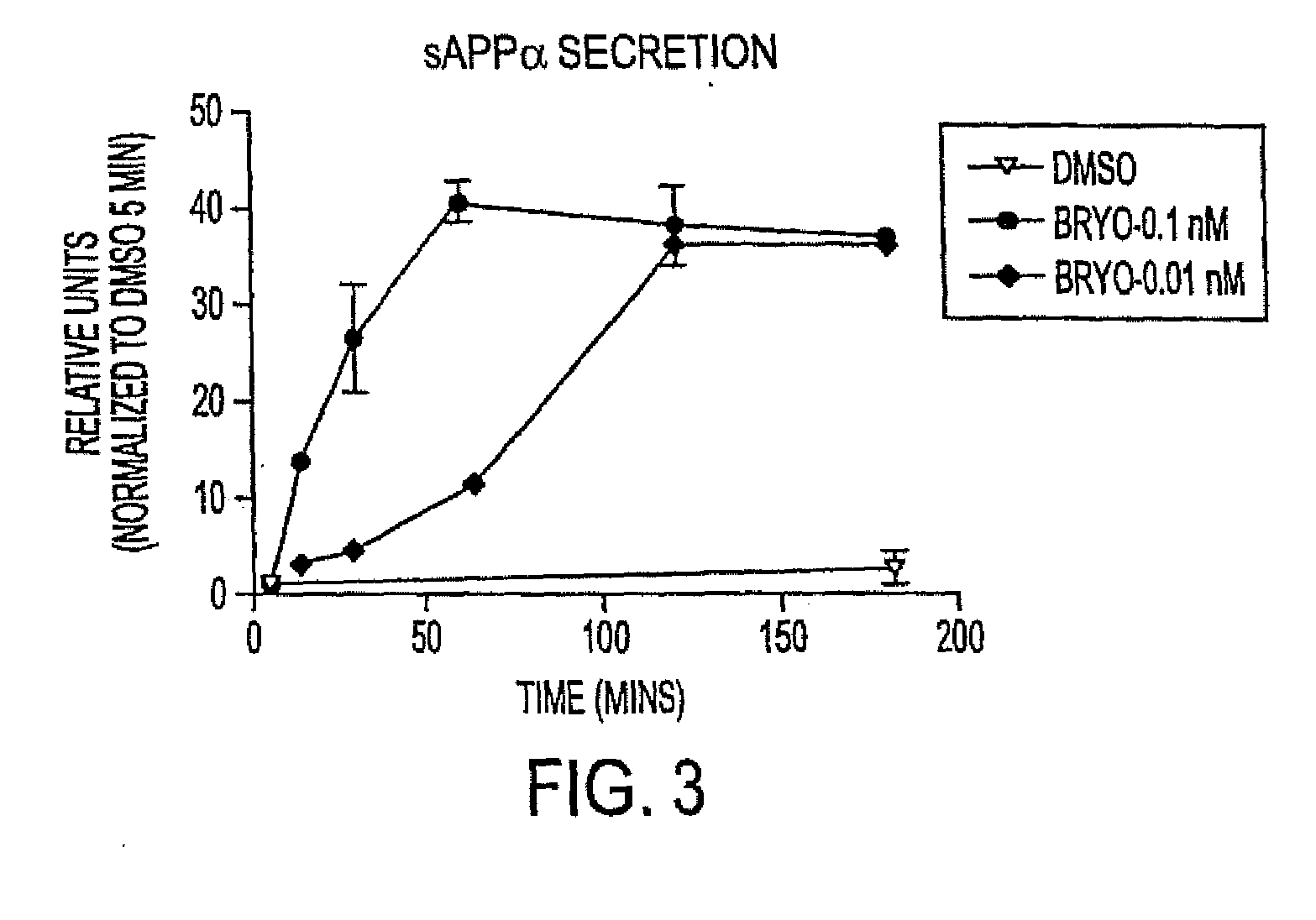Methods for Alzheimer's Disease Treatment and Cognitive Enhancement
a technology of alzheimer's disease and cognitive enhancement, applied in the field of modulation of secretase and to cognitive enhancement, can solve the problems of not addressing the progression of the disease, ineffective clinical use and with other types of cognition disorders, and improving symptomatic and transient cognition, so as to reduce the production of myalgia, inhibit preferentially, and reduce the effect of myalgia
- Summary
- Abstract
- Description
- Claims
- Application Information
AI Technical Summary
Benefits of technology
Problems solved by technology
Method used
Image
Examples
example 1
Cell Culture
[0093]Cultured skin fibroblasts were obtained from the Coriell Cell Repositories and grown using the general guidelines established for their culture with slight modifications (Cristofalo & Carptentier, 1988; Hiroshima et al., 1996). The culture medium in which cells were grown was Dulbecco's modified Eagle's medium (GIBCO) supplemented with 10% calf serum (Biofluids, Inc.). Fibroblasts from control cell lines (AC), cases AG07141 and AG06241, and a familial AD (FAD) case (AG06848) were utilized.
example 2
PKC Activators
[0094]The different tissue distributions, the apparently distinctive roles of different isozymes, and the differential involvement in pathology make it important to use pharmacological tools that are capable of preferentially targeting specific isozymes (Kozikowski et al., 1997; Hofmann, 1997). Resent research in the medicinal chemistry field has resulted in the development of several PKC activators, for instance different benzolactams and pyrollidinones. However, the currently studied bryostatin PKC activator not only has the benefit of providing isospecific activity, but also does not suffer from the set back of the previously used PKC activator, such as being tumor promoting. The bryostatin competes for the regulatory domain of PKC and engages in very specific hydrogen bond interactions within this site. Additional information on the organic chemistry and molecular modeling of this compound can be found throughout the literature.
example 3
Treatment
[0095]Cells grown to confluence in 6 cm Petri dishes for 5-7 days. On the day of the experiment, medium was replaced with DMEM without serum and left undisturbed for 2 h. Upon completion of the 2 hour serum deprivation, treatment was achieved by direct application to the medium of Bryo, BL and DMSO at the appropriate concentrations. DMSO was less than 1% in all cases. In most cases, medium was collected and processed after 3 hours of treatment for sAPP secretion. Other time points were also used to establish a time course of secretion.
PUM
 Login to View More
Login to View More Abstract
Description
Claims
Application Information
 Login to View More
Login to View More - R&D
- Intellectual Property
- Life Sciences
- Materials
- Tech Scout
- Unparalleled Data Quality
- Higher Quality Content
- 60% Fewer Hallucinations
Browse by: Latest US Patents, China's latest patents, Technical Efficacy Thesaurus, Application Domain, Technology Topic, Popular Technical Reports.
© 2025 PatSnap. All rights reserved.Legal|Privacy policy|Modern Slavery Act Transparency Statement|Sitemap|About US| Contact US: help@patsnap.com



